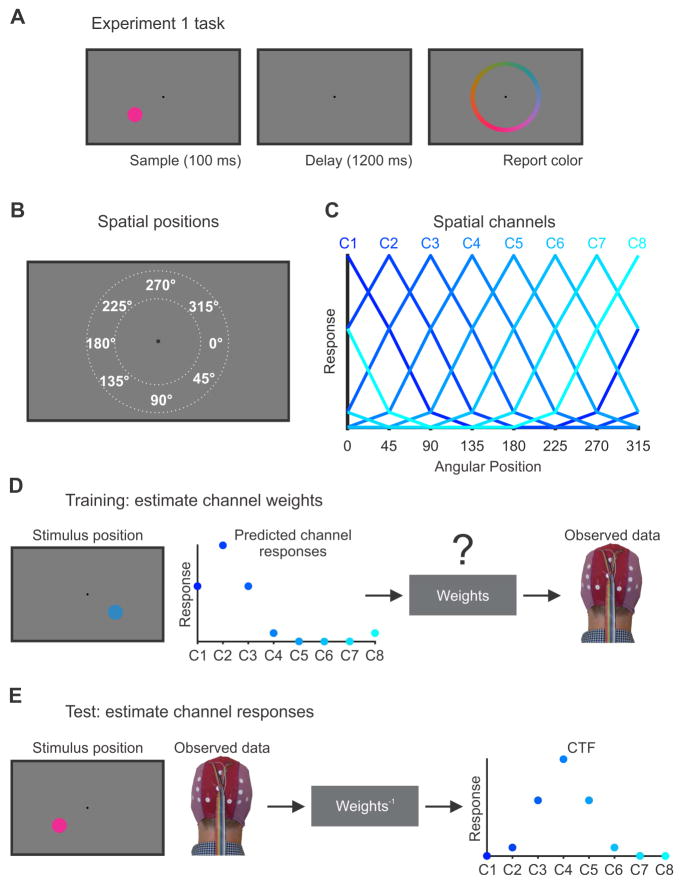Figure 1. Experiment 1 task and the inverted encoding model (IEM) for reconstructing spatial channel-tuning functions (CTFs).
(A) Observers in Experiment 1 performed a color WM task. Observers saw a brief sample stimulus (100 ms). After a 1200-ms retention interval, observers reported the color of a sample stimulus as precisely as possible by clicking on a color wheel. The position of the sample stimulus varied trial-to-trial but was wholly irrelevant to the task.
(B). The sample stimulus could appear anywhere along an isoeccentric band around the fixation (dotted white lines). We categorized stimuli as belonging to one of eight positions bins centered at 0°, 45°, 90°, and so forth. Each position bin spanned a 45° wedge of positions (e.g., 22.5° to 67.5° for the bin centered at 45°).
(C) We modeled oscillatory power at each electrode as the weighted sum of eight spatially selective channels (C1-C8), each tuned for the center of one of the eight position bins shown in (B). Each curve shows the predicted response of one of the channels across the eight positions bins (i.e., the basis function).
(D) In the training phase, we used the predicted channel responses, determined by the basis functions shown in (C), to estimate a set of channel weights that specified the contribution of each spatial channel to the response measured at each electrode. The example shown here is for a stimulus presented at 45°.
(E) In the test phase, using an independent set of data, we used the channel weights obtained in the training phase to estimate the profile of channel responses given the observed pattern of activity across the scalp. The resulting CTF reflects the spatial selectivity of population-level oscillatory activity, as measured using EEG. The example shown here is for a stimulus presented at 135°. For more details, see STAR Methods.

